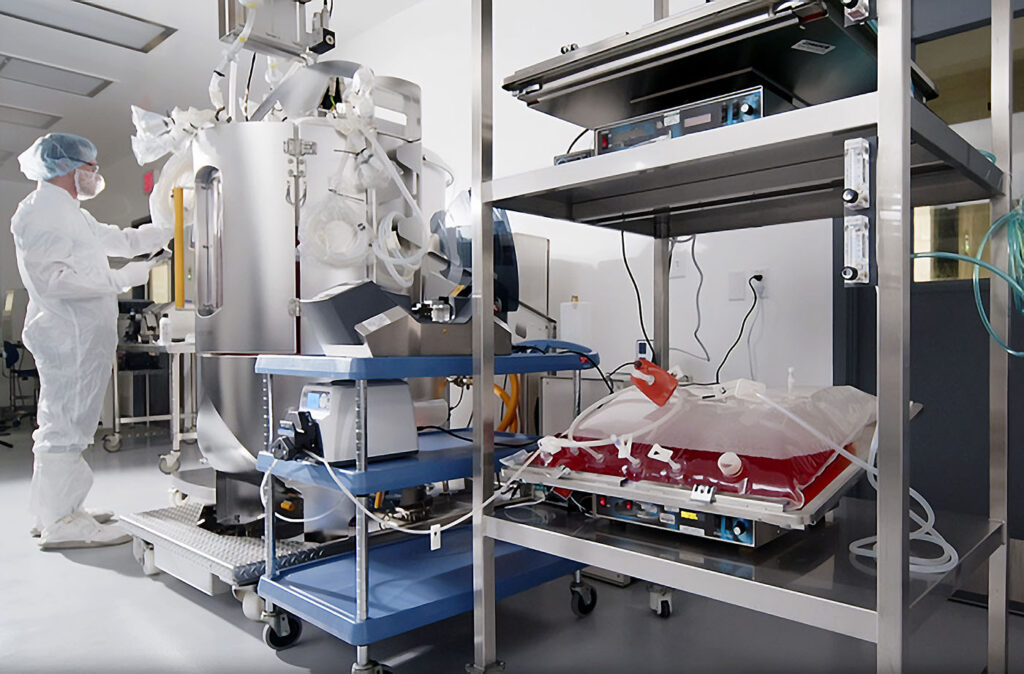Iterative development is a fixture in manufacturing environments where ideas are conceived, needs and aspirations are reassessed in light of those ideas, and then advanced to something that, often, is better and more attuned to current needs than the original concept. Such iterations are seen within companies, too.
Curia Global, Inc. is one such case study in iterative development. This contract development and manufacturing organization (CDMO) was founded in 1991 as Albany Molecular Research, Inc. (AMRI) to focus on small molecule discovery and development. As it gained expertise, it took on manufacturing abilities.
But, as Philip Macnabb, CEO, points out, “There are two ways to expand: build capabilities in-house, or acquire companies with the capabilities you are looking for.” By 2014, AMRI was ready for rapid expansion. It acquired Cedarburg Pharmaceuticals, Inc., Oso BioPharmaceuticals Manufacturing, two Aptuit businesses, Gadea Pharmaceutical Group, Whitehouse Laboratories, and Prime European Therapeutics–all by the end of 2016.
This rapid expansion meant AMRI had, effectively, outgrown its name. Recognizing its global reach—with 20 locations in seven countries—it relaunched itself in 2021 as Curia.
“The new name reflected the growth from a geographic to a more global concept,” Macnabb says. It also redirected attention to cures, supporting the company’s tagline: “From Curiosity to Cure.”
Lessons in quality
Throughout these acquisitions, “What we’ve learned is that, while many CDMOs have end-to-end solutions, you have to be exceptional in each of the service lines you offer to earn customer trust. You have to deliver the highest quality in each of the disciplines, from the science of discovery and development to ‘right-the-first-time’ delivery of commercial batches. Those are different muscles, but they’re equally important,” Macnabb stresses.
Since joining Curia in 2023, Macnabb has divested some businesses and consolidated some sites to focus more tightly on the organization’s core offerings. For the biopharma segment, this entailed consolidating three sites into one to minimize delays and eliminate the need to ship products cross-country between steps. He further refined the brand last year by offering four sub-brands around biologics, small molecules, generic APIs, and sterile drug products.
In the biologics space, Curia has expertise in developing antibodies, proteins, enzymes, and mRNA for therapeutics and vaccines. “We can discover an antibody in Hayward, CA, and then scale it up to 2,000 liters in our GMP suite in Hopkinton, MA,” Macnabb adds.
The “big tuna”
In addition to working with the current major expression platforms used for protein production, Curia also offers its own TunaCHO™ platform for transient protein production. The name was created by the founder of a Curia acquisition to imply that “even a small company can become a big fish,” Macnabb explains with a chuckle.
That notion isn’t wrong. In-house studies show TunaCHO produces significantly higher protein expression than other leading CHO transient systems for IgG1, Fc-fusion protein, and His-tagged, non-antibody proteins. For several low-expressing antibodies, production volume was 10- to 20-fold higher than with other premium expression systems.
As a CDMO, one of Curia’s most challenging projects was a self-replicating rabies vaccine developed with Replicate Bioscience in 2023. Curia’s contribution involved process development scale-up and cGMP manufacturing. The project was particularly challenging because of the large size of the molecule.
The 10,000-base srRNA molecule was much longer than conventional linear mRNA vaccines, making it more difficult to manufacture. Challenges included these molecules’ tendency to degrade or shear, the need for longer in vitro transcription times, the greater likelihood of errors related to longer transcripts, and other hurdles. Yet, manufacturing succeeded, and Replicate published positive Phase I results last Spring in Nature
Communications.1
“Every project is different and has its own challenges because you’re working with living organisms,” Macnabb emphasizes. “This one reinforced our scientific knowledge in the business and was a testament to our value proposition.”
Geopolitical headwinds
Throughout much of 2025, CDMOs have grappled with fluctuating geopolitical tensions and tariffs, either directly as international businesses or indirectly through their clients’ constraints. The bright spot for biopharma companies is that, despite any market uncertainty, “The funding environment is steady,” Macnabb says. Nonetheless, “The industry needs clarity around U.S. tariff policy and programs.”
Most of Curia’s clients are companies engaged in industry/academia partnerships within the U.S., but they still are impacted by the geopolitical headwinds that affect larger, international businesses. Specifically, Macnabb says, biopharma innovators are dealing with funding cuts and changes in focus at the National Institutes of Health as well as fluctuations in international tariffs that affect their ability to trade internationally.
While trade negotiations are being sorted out at federal levels, Curia is focusing on the evolving interests of current and potential clients and the technologies that are being applied to advance those programs. To that end, it is monitoring investigational new drug filings in terms of the type of product and the company filing, as well as the overall market, to continually fine-tune Curia’s development strategy.
What Macnabb sees is strong industry interest in cell and gene therapies, antibody-drug conjugates, oligonucleotide therapies, and the broad category of cancer therapies. These therapies are each evolving rapidly, developing capabilities that weren’t necessarily associated with them in the recent past, such as the possibility of conjugating oligonucleotides to drugs.
Near-term expansions
For Curia, though, Macnabb is focused on such near-term projects as completing expansions to facilities in Albuquerque, NM, and Glasgow, Scotland.
The $200 million investment in the Albuquerque facility increases Curia’s cGMP manufacturing space by 70,000 square feet—approximately 35% of the overall facility. It features a small-scale line that recently went online with the flexibility to fill biologics and non-potent small molecules into vials, syringes, or cartridges, and a high-speed vial-filling line that is scheduled to go online near the end of this year.
Glasgow’s sterile fill-finish facility focuses on sterile drug products and is certified to perform high-potent product fills at the highest occupational exposure band (OEB) rating of 5. The expansion doubles possible batch sizes to 20,000 vials; adds robotic, lossless filling technology to significantly increase fill speeds; and brings a second lyophilizer online. The second line is anticipated to go online in 2027.
Curia has a history of rapid expansion and strategic acquisition that helped propel it to its status as a global CDMO. No additional acquisitions are on its immediate radar, however. At least for the foreseeable future, Macnabb says, “We’re happy with the space we’re in.”
Reference
1. Maine, C.J., Miyake-Stoner, S.J., Spasova, D.S. et al. Safety and immunogenicity of an optimized self-replicating RNA platform for low dose or single dose vaccine applications: a randomized, open label Phase I study in healthy volunteers. Nat Commun. 2025;16(1). doi.org/10.1038/s41467-025-55843-9.


